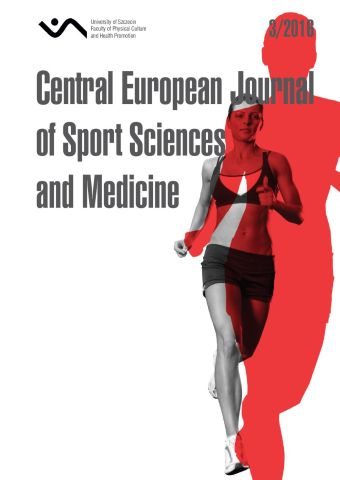
ISSN: 2300-9705
eISSN: 2353-2807
OAI
DOI: 10.18276/cej.2016.3-09




Lista wydań /
Vol. 15, No. 3/2016
Age Differences in Psychoactive Substance Abuse in Population of the Republic of Belarus
| Autorzy: |
Vladimir
Lelevich
Monitoring Centre for Drugs and Drug Addiction, Grodno State Medical University, Grodno, Belarus Hanna Vinitskaya Monitoring Centre for Drugs and Drug Addiction, Grodno State Medical University, Grodno, Belarus Yuliya Sarana Monitoring Centre for Drugs and Drug Addiction, Grodno State Medical University, Grodno, Belarus Eugenij Tischenko Department of Public Health, Grodno State Medical University, Belarus |
| Słowa kluczowe: | psychoactive substances drug abusers Narcological Register population Belarus |
| Data publikacji całości: | 2016 |
| Liczba stron: | 10 (85-94) |
Abstrakt
Background. The recent epidemiological studies conducted in Belarus point to a fall in the average age of registered drug abusers and in the age of drug use onset, an increasing proportion of injecting drugs, and addicted persons. The aim of the study was to evaluate the age differences in the prevalence of psychoactive substance abuse in the Republic of Belarus using the official data of the Ministry of Health.Material and methods. The data on registered drug abusers, who were recorded in the Narcological Register in health care institutions between 2000 and 2014, were analyzed. Results. During that period the number of drug abusers under observation increased almost 3 times, and the situation with the spread of psychoactive substances changed towards appearance of synthetic drugs. The spread of particular drugs (opioids, cannabinoides, inhalants, and Spice based designer drugs) was shown to be depended upon the age of registered drug abusers. Conclusion. The data obtained indicate necessity of the age-related studies on drug abuse prevalence, and might be useful for working up preventive measures to stop the spread of drug addiction.
Pobierz plik
Plik artykułu
Bibliografia
| 1. | Avsievich, N., Danilova, S., Krasko, N., Golovach, T., Seredich, N. (2008). Outcomes of school study using the ESPAD methodology conducted in 2007 among the students of Brest Oblast. Brest. |
| 2. | Baumann, M.H., Solis, E., Watterson, L.R., Marusich, J.A., Fantegrossi, W.E., Wiley, J.L. (2014). Baths Salts, Spice, and Related Designer Drugs: The Science behind the Headlines. The Journal of Neuroscience, 34 (46), 15150–15158. DOI: 10.1523/ JNEUROSCI.3223-14.2014. |
| 3. | Becker, J.B., Hu, M. (2008). Sex Differences in Drug Abuse Frontiers in Neuroendocrinology, 29 (1), 36–47. DOI:10.1016/j.yfrne.2007.07.003. |
| 4. | Degenhardt, L., Chiu, W.-T., Sampson, N., Kessler, R.C., Anthony, J.C., Angermeyer, M., ..., Wells, E.J. (2008). Toward a Global View of Alcohol, Tobacco, Cannabis, and Cocaine Use: Findings from the WHO World Mental Health Surveys. PLoS Med, 5 (7), e141. DOI:10.1371/journal.pmed.0050141. |
| 5. | European Monitoring Centre for Drugs and Drug Addiction. (2016). European Drug Report 2016. Trends and Developments. Luxembourg: Publication Office of the European Union. |
| 6. | Koshkina, E.A. (2003). Trends in the prevalence of psychoactive substance use in the Russian Federation. Bulletin of Narcotics, 25 (1–2), 121–130. |
| 7. | Koshkina, E.A. (2011). Medical and social consequences of substance abuse for the health of the nation. Journal of Addiction Problems, 5, 27–30. |
| 8. | Lelevich, V.V., Kozlovsky, A.V., Vinitskaya, H., Maksimchuk, V.P. (2006). Drug use and illicit drug trafficking in Belarus. Minsk: Altiora. |
| 9. | Lelevich, V., Vinitskaya, H., Lelevich, S. (2014). Ocena rozpowszechnienia używania substancji psychoaktywnych wśród ludności na Białorusi. Probl Hig Epidemiol, 95 (2), 407–411. |
| 10. | Lelevich, V.V., Vinitskaya, H., Lelevich, S.V., Maksimchuk, V.P., Pekarsky, O.A. (2008). Report on drug abuse and illegal drug trafficking in Belarus/Programme of Assistance for the Prevention of Drug Abuse and Drug Trafficking in Belarus, Ukraine and Moldova (BUMAD). Minsk: Bеlsens. |
| 11. | Lelevich, V.V., Vinitskaya, A.G., Lelevich, S.V., Tishchenko, Ye.M., Konorazov, I.I. (2015). Gender and age aspects of the prevalence of drug abuse in the Republic of Belarus. Vestnik of the Smolensk State Medical Academy, 14 (2), 7–13. |
| 12. | Ministry of Health of the Republic of Belarus State Institution «Republican Scientific and Practical Center for Medical Technologies, Informatization, Administration and Management of Health». (2015). Public health in the Republic of Belarus An official statistics collection, 2014. Minsk, 282. Retrieved from: http:// http://www.med.by/content/stat/stat2015/2014_1.pdf. |
| 13. | Moskalenko, V.D. (2007). Social consequences of alcoholism and drug addiction. Narcology, 3, 25–29. |
| 14. | Razvodovsky, Y.E., Vinitskaya, A.G., Lelevich, V.V. (2010). Gender aspects of the prevalence of drug abuse in the Republic of Belarus. Narcology, 11, 22–27. |
| 15. | Stevens, S.J., Andrade, R.A.C., Ruiz, B.S. (2009). Women and substance abuse: Gender, age, and cultural considerations. Journal of Ethnicity in Substance Abuse, 8 (3), 341–358. DOI: 10.1080/15332640903110542. |
| 16. | Vinitskaya, A.G., Lelevich, V.V., Razvodovsky, Y.E. (2012). The prevalence of opiate addiction in the Republic of Belarus. Meditsinskie novosti, 1, 41–44. |
| 17. | United Nations Office on Drugs and Crime. (2015). World Drug Report 2015. Retrieved from: https://www.unodc.org/documents/ wdr2015/World_Drug_Report_2015.pdf. |